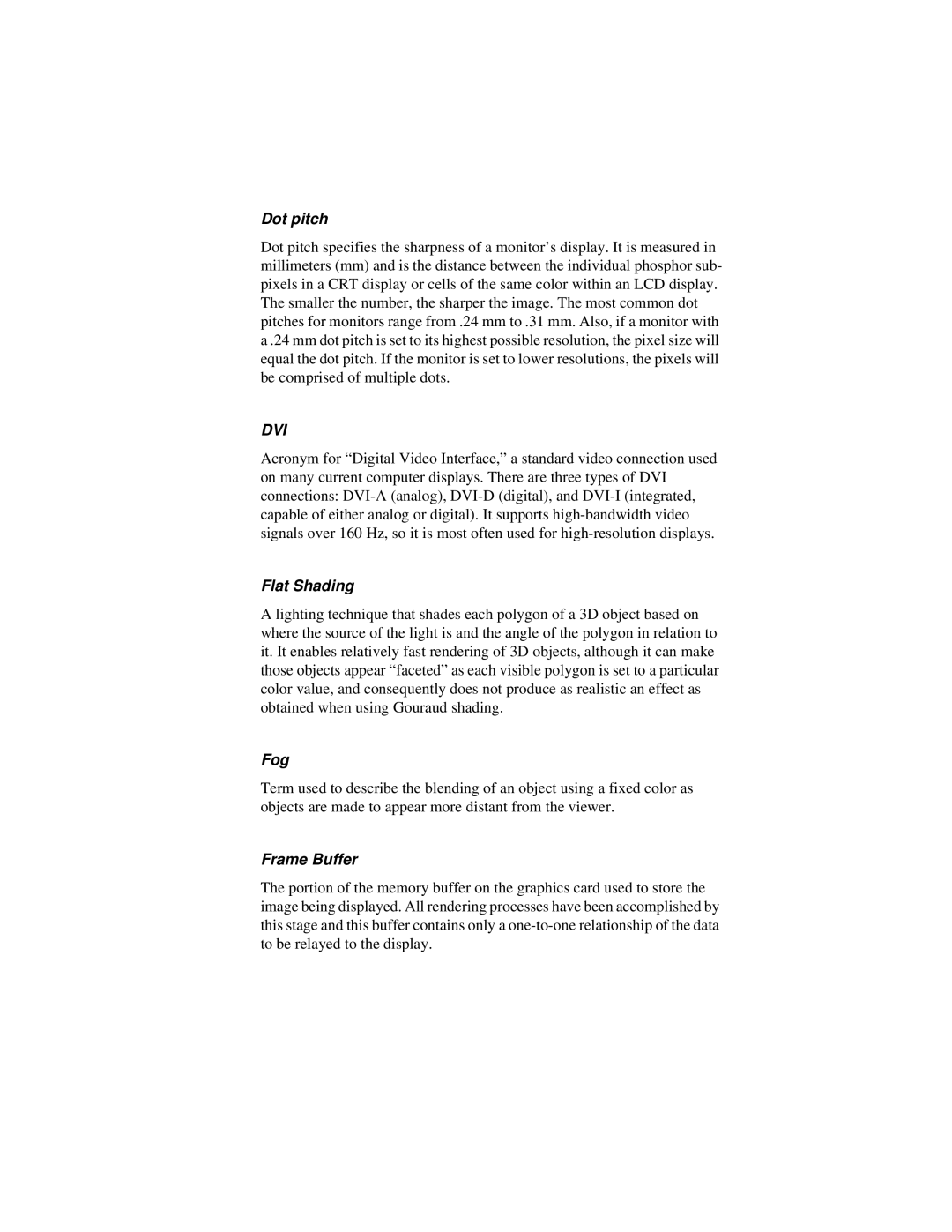Dot pitch
Dot pitch specifies the sharpness of a monitor’s display. It is measured in millimeters (mm) and is the distance between the individual phosphor sub- pixels in a CRT display or cells of the same color within an LCD display. The smaller the number, the sharper the image. The most common dot pitches for monitors range from .24 mm to .31 mm. Also, if a monitor with a .24 mm dot pitch is set to its highest possible resolution, the pixel size will equal the dot pitch. If the monitor is set to lower resolutions, the pixels will be comprised of multiple dots.
DVI
Acronym for “Digital Video Interface,” a standard video connection used on many current computer displays. There are three types of DVI connections:
Flat Shading
A lighting technique that shades each polygon of a 3D object based on where the source of the light is and the angle of the polygon in relation to it. It enables relatively fast rendering of 3D objects, although it can make those objects appear “faceted” as each visible polygon is set to a particular color value, and consequently does not produce as realistic an effect as obtained when using Gouraud shading.
Fog
Term used to describe the blending of an object using a fixed color as objects are made to appear more distant from the viewer.
Frame Buffer
The portion of the memory buffer on the graphics card used to store the image being displayed. All rendering processes have been accomplished by this stage and this buffer contains only a
